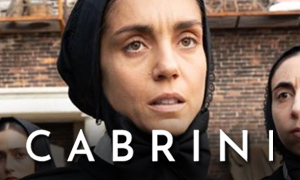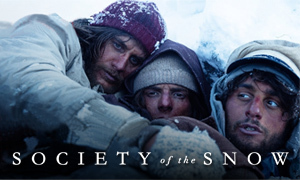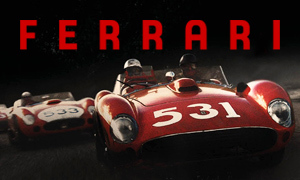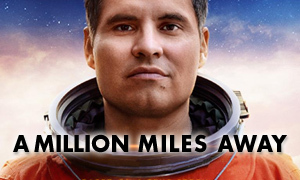The Burial vs. the True Story of Willie Gary & Jeremiah O'Keefe
Jamie Foxx
Born: December 13, 1967
Birthplace:
Terrell, Texas, USA
Willie E. Gary
Born: July 12, 1947
Birthplace: Eastman, Georgia, USA
Bio: High-Profile Lawyer who Represented Jeremiah O'Keefe
Amanda Warren
Born: July 17, 1982
Birthplace:
New York City, New York, USA
Gloria Gary
Born: November 17, 1948
Bio: Willie Gary's Wife
Tommy Lee Jones
Born: September 15, 1946
Birthplace:
San Saba, Texas, USA
Jeremiah O'Keefe
Born: July 12, 1923
Birthplace: Ocean Springs, Mississippi, USA
Death: August 23, 2016, Biloxi, Mississippi, USA
Bio: Funeral Home Owner and Insurance Executive
Pamela Reed
Born: April 2, 1949
Birthplace:
Tacoma, Washington, USA
Annette O'Keefe
Born: December 12, 1924
Birthplace: Augusta, Georgia, USA
Death: May 16, 1998, Biloxi, Mississippi, USA
Bio: Cofounded the Gulf National Life Insurance Company with her Husband
Bill Camp
Born: October 22, 1964
Birthplace:
Massachusetts, USA
Ray Loewen
Born: June 27, 1940
Birthplace: Steinbach, Manitoba, Canada
Bio: Founder of the Loewen Group that Acquired Funeral Homes and Cemetaries
Alan Ruck
Born: July 1, 1956
Birthplace:
Cleveland, Ohio, USA
Mike Allred
Born: July 10, 1945
Birthplace: Jackson, Mississippi, USA
Bio: Lawyer of Jeremiah O'Keefe
Mamoudou Athie
Born: November 6, 1988
Birthplace:
Mauritania
Hal Dockins
Born: June 12, 1950
Birthplace: Mississippi, USA
Bio: Lawyer of Jeremiah O'Keefe
Lance E. Nichols
Born: July 13, 1955
Birthplace:
New Orleans, Louisiana, USA
Judge James E. Graves, Jr.
Born: November 19, 1953
Birthplace: Clinton, Mississippi, USA
Did attorney Willie Gary grow up in poverty?
Yes. One of 11 children, the real-life account confirms that like in The Burial movie, Willie Gary rose out of poverty as the son of a field worker (picker) to become a highly successful lawyer. After standing out as an all-state high school football player, he attended Shaw University in Raleigh, North Carolina on an athletic scholarship. While majoring in business administration in college, Gary started a landscaping business to support himself and was named co-captain of Shaw's football team during his final three seasons at the school. He graduated in 1971 and attended law school in Durham at North Carolina Central University. The New Yorker notes that while in law school, Gary kept his thriving landscaping business going in order to pay tuition and provide for his wife Gloria and their children. After graduating law school in June 1974 and returning to Florida, he passed the bar exam on his first try.
Was Willie Gary's first job after law school with the public defender's office?
Yes. The Burial fact-check reveals that Willie E. Gary talked his way into a job at the Office of the Public Defender in Stuart, Florida. He became involved in a death penalty case prior to finding out if he'd passed the bar exam. Despite losing the verdict, in part because he and the public defender who hired him were unprepared for the trial, the defendant was eventually given a retrial and his sentence was reduced to life in prison. After the trial, there were no funds to continue to pay Gary, so he decided to open his own law office and did so on January 17, 1975.
In his second year working for himself, he achieved local notoriety when he settled a case for $225,000 against an insurance company. The case involved a black truck driver named Charlie Hayes and an elderly white woman named Ella Dancy. When Mrs. Dancy ran a stop sign, Charlie Hayes was forced to swerve off the road and crashed into a barn, at which point he was decapitated by a piece of falling timber. In another case that year, lawyer Willie Gary negotiated his first million-dollar settlement. His first million-dollar verdict, the benchmark of a trial lawyer, came roughly eight years later in 1984. By 1996, he had amassed close to sixty settlements or verdicts of a million dollars or more. -The New Yorker
Why did Jeremiah O'Keefe sue Ray Loewen's company?
In September 1995, lawyer Willie Gary represented Biloxi businessman Jeremiah "Jerry" O'Keefe in his lawsuit against Canadian businessman Ray Loewen, the head of the Loewen Group, which owned a large number of American and Canadian funeral homes. One of Loewen's tactics was to buy up funeral homes in an area and undercut the smaller owners nearby until they went out of business, at which time he would raise prices.
Jerry O'Keefe owned eight funeral parlors in Mississippi, as well as the funeral insurance business Gulf National. Via the latter, O'Keefe had been in a contractual agreement, "twice renewed and affirmed," for 16 years with Wright & Furguson, the city of Jackson's largest and most esteemed funeral home. When Ray Loewen purchased Wright & Furguson, he informed O'Keefe that he was canceling the previous agreement between O'Keefe and Wright & Furguson. Loewen would instead sell funeral insurance via O'Keefe's rival, the Raymond Funeral Home, another funeral parlor that Loewen purchased. This led to a contractual dispute between O'Keefe and Loewen that resulted in O'Keefe suing Loewen for breach of contract in 1991.
After months of negotiating, a settlement was reached. O'Keefe would sell Loewen three funeral homes in exchange for Loewen's funeral insurance business in Mississippi. However, while researching The Burial fact vs. fiction, we learned that Loewen failed to honor the settlement terms, and like in the movie, he never signed the agreement.
O'Keefe's insurance company, Gulf National, had found itself in financial trouble after making a mortgage loan to a Louisiana entity. The Louisiana Department of Insurance convinced the Mississippi Department of Insurance that the loan was bad, which triggered O'Keefe's company to be placed under administrative supervision. O'Keefe challenged that ruling and prevailed. Two individuals had diverted the use of the mortgage proceeds and served prison time for their actions.
O'Keefe's company found itself in desperate need of money in order to supplement its cash reserves to meet the requirements of the insurance regulators. Ray Loewen was biding his time and waiting for O'Keefe to go under so that he could buy up his funeral homes for much less out of bankruptcy. To raise money, O'Keefe had to sell off four of his funeral homes, including the three he'd planned to sell to Loewen. With few options, O'Keefe moved forward with his lawsuit. The ensuing civil trial, Jeremiah J. O'Keefe, Sr. vs. Loewen Group, Inc., took place in Jackson, Mississippi and began on September 12, 1995.
Did Jeremiah O'Keefe meet with Ray Loewen on his yacht?
Yes. While researching how accurate is The Burial, we discovered that the subject of the yacht became heavily focused on in the trial, specifically whether Loewen owned the yacht or not. Apparently, Loewen owned another company that owned the yacht. The Loewen Group rented the yacht from that company. In the end, Ray Loewen essentially owned the yacht, even if it was indirectly. The lengthy arguments over the yacht annoyed the judge, James E. Graves, Jr., and he instructed the lawyers to move on from it.
How long had Jeremiah O'Keefe been in the funeral business?
Jeremiah O'Keefe's family had been in the funeral business since the end of the Civil War. His great-grandfather owned a livery service (transport service) and started hauling coffins. Jeremiah was a somewhat prominent fixture in Mississippi. He had been the mayor of Biloxi for eight years and had also served in the state legislature.
Did Jeremiah O'Keefe hire a black lawyer because the trial was going to take place in a predominately black county?
Yes. The Burial true story corroborates that the trial took place in the predominately black Hinds County, Mississippi. In order to better appeal to a majority black jury and Judge James E. Graves, Jr., also black, O'Keefe hired Willie Gary to represent him. This was also in response to the Loewen Group adding two prominent black lawyers, who were also politicians, to their legal team. One was a state senator and the other was a state representative and chairman of the black congressional caucus.
Did Ray Loewen's company hire a black female attorney named Mame Downes to fight the lawsuit?
No. In The Burial movie, Ray Loewen's company, the Loewen Group, hires a hotshot black female attorney named Mame Downes (Jurnee Smollett) in response to Jeremiah O'Keefe hiring Willie Gary (Jamie Foxx). Both parties believe a black lawyer will have a better chance of winning over a majority black jury and the black judge in Hinds County, Mississippi. In the movie, Mame, who we learn once clerked for the first female Supreme Court Justice, Sandra Day O'Connor, is a more-than-capable rival for attorney Willie Gary. However, there was no Mame Downes in real life. Jurnee Smollett's character is mostly fictional.
The Loewen Group did bring on an experienced black trial lawyer who specialized in complex business litigation and antitrust law, a man by the name of Richard Sinkfield out of Atlanta. He most closely aligns with Jurnee Smollett's character, with the obvious difference being his sex.
Did Jeremiah O'Keefe's lawyer, Michael Allred, harbor racist attitudes?
Yes. In the movie, Willie Gary (Jamie Foxx) is forward with Michael Allred (Alan Ruck) and flat out asks him, "How do you feel about workin' with black folk?" to which Allred replies, "I suppose I am a little prejudiced." Gary then introduces Allred to his team, which is made up of black men. In real life, Allred confessed his own prejudice to Gary without Gary asking him about it. It happened the following morning after they first met. Allred started to feel relaxed around Willie Gary and confessed, "There's something you should know about me, Willie," Allred said. "I am prejudiced, but I'm trying to work on it." Gary nodded and replied, "That's a very good thing to be working on, Mike." -The New Yorker
How long has Willie Gary been married to his wife Gloria?
While conducting The Burial fact-check, we discovered that Willie Gary married his childhood sweetheart, Gloria Royal, prior to the start of his second year of college. They have been married for more than 50 years and have four children: Kenneth, Sekou, Kobe and Ali.
Did the real Willie Gary wear three-thousand-dollar suits and own a Boeing 737?
Yes. The true story behind The Burial movie confirms that Willie Gary was flamboyant in real life as well. According to The New Yorker, he wore three-thousand-dollar suits and his Gulfstream II executive jet "Wings of Justice" was adorned with 18k gold fixtures. At one point, he owned three jets, including "Wings of Justice I" and "Wings of Justice II". The latter, a Boeing 737, had his scales of justice logo on its tale. The movie depicts Gary as owning the Boeing 737 at the time of the 1995 trial, but in real life, he purchased it years later. It's true that Ray Loewen and Willie Gary's jets were parked next to each other when Loewen came to town for the trial.
Willie Gary was known to wear a diamond-encrusted Rolex but would take it off prior to going before a jury. He lives in a 25,000-square-foot, $10 million mansion and has a fleet of luxury cars that includes Rolls-Royces and Bentleys. It is not uncommon for personal injury lawyers to advertise their success to potential clients, and Willie Gary didn't hold back in doing so.
Is Willie Gary superstitious like in the movie?
Yes. In The Burial, Willie Gary (Jamie Foxx) is walking down the street with his team when they are all about to walk between different posts near a crosswalk. He stops them, saying, "We can't split the pole. We can't split the pole," and makes them all walk back and follow him through the same two posts. It's true that the real Willie Gary was superstitious. This scene comes almost directly from The New Yorker article where it states that while walking to the courthouse, no member of Willie Gary's team may deviate around a lamppost, cross to the other side of the road, or walk up a flight of stairs on the opposite side of a railing. Should a team member commit an infraction, he or she must retrace their steps.
Like many highly successful people, Willie Gary does not drink and has never smoked. He can only recall having alcohol once when he took a sip of champagne. Gary is a religious person and prays with his team before going into the courtroom.
How much did Willie Gary attempt to settle the case for?
Initially, Willie Gary tried to settle Jeremiah O'Keefe's lawsuit against Ray Loewen for $125 million, but Ray Loewen rejected the request. -The New Yorker
How much was Jeremiah O'Keefe awarded in the trial?
In researching The Burial's historical accuracy, we confirmed that the jury ruled in favor of O'Keefe and awarded him $500 million in punitive and compensatory damages. It became the largest verdict ever awarded in the state of Mississippi (the previous was $18 million).
"I could not believe what I was hearing," Ray Loewen said of the jury's verdict. "I was absolutely stunned. I thought, this can't be happening."
Following the verdict, the parties settled the case for a more feasible number of $129 million. It was an amount that Jeremiah O'Keefe would likely be able to see in his lifetime, rather than spending his remaining years in litigation. He had no desire to fight with other creditors over the bankrupt remains of Ray Loewen's company. As part of the agreement, Ray Loewen added the stipulation that Willie Gary was not allowed to represent a litigant in a case against him for the next three years. He offered to pay Gary a retainer of $20,000 per year for this assurance, and Gary accepted the deal. -The New Yorker
How much did Willie Gary make from the case?
Of Jeremiah O'Keefe's $129 million settlement, Willie Gary was entitled to 25% of the sum, which was his fee. Gary received $12.5 million of the cash part of the settlement. He also received 375,000 shares of Loewen Group stock, along with his percentage of an $80 million non-interest-bearing note. O'Keefe sold his Loewen stock when it reached a value of $38.70 per share. He encouraged Gary to sell but he never did, likely because he was too busy trying cases. Gary's stock ended up being worth close to nothing. -The New Yorker
Did the ruling eventually bankrupt Ray Loewen's company?
In answering the question, "Is The Burial movie accurate?" we learned that while the Loewen Group did point to the O'Keefe vs. Loewen ruling as a factor in what led to them going bankrupt in 1999, it was far from the only reason. Perhaps the biggest reason was that Ray Loewen's zeal for growth resulted in the company incurring enormous debt. By 1997, the company operated 1,115 funeral homes. That same year, Loewen reported a loss of close to $600 million. He was forced to resign as president and CEO of his own company in October 1998. The company declared bankruptcy less than a year later, in June of 1999. The company had amassed $3.2 billion of debt. -The New Yorker
Did Willie Gary and his wife appear on an episode of Lifestyles of the Rich and Famous?
Yes. The episode recounts Willie E. Gary's life story and overwhelming success. He expresses his gratefulness for the good fortune that God has blessed him with. "I wanna make a lot of money because I wanna give a lot of money to a lot of causes I believe in," Gary told Lifestyles of the Rich & Famous in the season one episode that aired on October 16, 1992. "I just feel that but for God and a lot of good people that were behind me, I would not be where I am today." The episode offers a look at Gary's mansion and high-end automobiles, in addition to a new weekend retreat he was having built at the time.
Is Willie Gary as successful a lawyer as the movie makes him out to be?
Yes. According to his website, he has won jury awards and settlements over the course of his career that total more than $30 billion. He has tried cases in a total of 45 states. In addition to his success representing Jeremiah O'Keefe, some of his other well-known cases include a $240 million August 2000 verdict against Disney for copying the concept for the ESPN Wide World of Sports Complex without permission.
In researching the real story, we learned that Forbes Magazine listed Willie Gary as one of the "Top 50 attorneys in the U.S." He has been featured in established publications like The New York Times, The Boston Globe, The Chicago Tribune, Ebony, Fortune and People Magazine. He has appeared on The Oprah Winfrey Show and his cases have been documented on the CBS Evening News, 60 Minutes, and ABC's World News Tonight with Peter Jennings.
Willie Gary's once small law firm, now known as Gary, Williams, Parenti, Watson, Gary & Gillespie, P.L.L.C., boasts a team of 21 attorneys and a paralegal and professional staff of over 50 employees. The firm is located in downtown Stuart, Florida and occupies the former Pelican Hotel where Gary had worked as a dishwasher when he was a teenager. It is one of two offices the firm has in Florida, in addition to smaller offices in at least three other states, including Texas, Mississippi and Louisiana. -WillieGary.com
"Sometimes you get kinda teary-eyed when you think about what you came through and what it took to get here," Gary told 60 Minutes of his success. "And you say, 'God, I thank you. I really thank you.'"







